Interview of Yana Radilova with the photographer Carl Warner
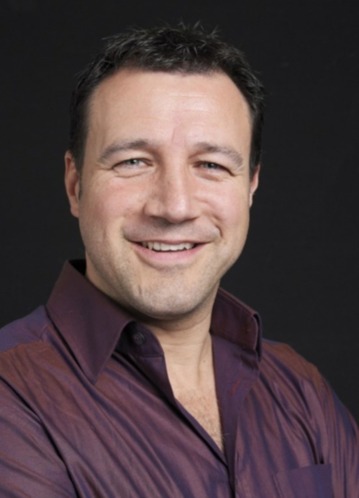
Carl Warner: “My photos are a pleasant deception”
What roused your interest in photography?
I first became interested in photography from looking at album covers in the 1970’s that were mainly created by Hipgnosis. Bands like Led Zeppelin and Pink Floyd were using photography to illustrate ideas and create surreal imagery that I had only previously seen in the work of painters and illustrators. Photo compositing and retouching was being used to expand the horizons of conventional photography in order to explore a more creative and imaginative form of image making, and as someone who began life wanting to be an illustrator I could see that photography was a much more exciting and immediate medium to work with.
Why do you prefer photographing to drawing?
I still love to draw, and although I can sketch reasonably well my photography skills are a lot better. Drawing out my ideas is the first stop in unloading the snapshots from my imagination; it enables me to pin down with greater clarity the structure and form of the compositions that I see through a glass darkly in my minds eye. Once I have this vision on paper it is much easier for me to think about the ingredients I need to make the picture come to life and I can share it with my team of model makers and food stylists who can see what I am trying to achieve and help me to construct it.
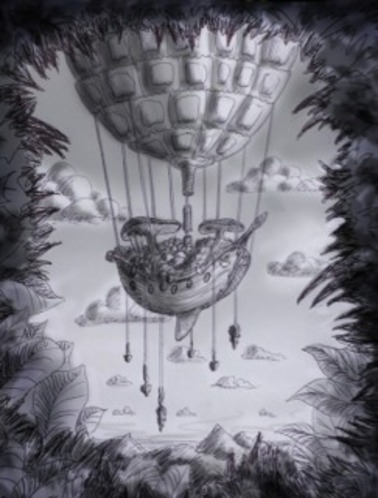
Gondola sketch
When the photography begins I get very excited as the image starts to come together, the composition and the lighting of an image is something I derive a lot of pleasure from and I see this as purely and extension of my drawing ability as it feels like one and the same thing in some respects. But to answer the question, I guess that as the final image I create is a photograph rather than a sketch I must therefore prefer photography.
I really admire your “Foodscapes”! What inspired you to make art from food?
Food is something I find incredibly fascinating, not only for it’s intrinsic aesthetic beauty, it’s variety of textures and colours, it’s wealth of taste and aroma, but the importance it plays in the sustaining of life, the defining of cultures and it’s role as a bond within the social and communal aspect of human life.
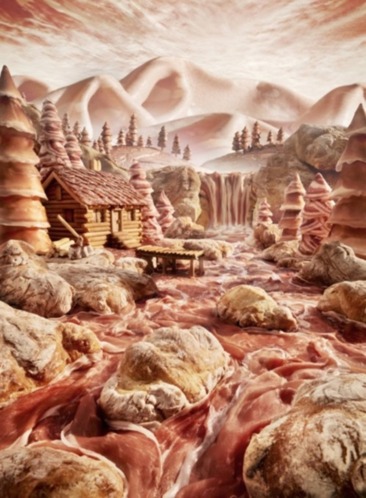
Salami river
I find that creating art from food is not only a celebration of it, but an opportunity to explore the amazing connections between organic material, and how the smaller aspects of nature reflect their larger counterparts. I enjoy the humorous and whimsical idea of creating new worlds from our food so that through my work people can appreciate the wonderment of it as well as being inspired to look at the world in a different way.
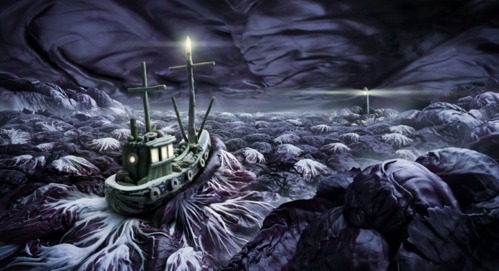
Cabbage sea
The first foodscape image I created was ‘The Mushroom Savanna’ and I was inspired by finding a selection of large mushrooms in a local market which reminded me of trees in some African landscape. I brought them back to my studio together with some rice and beans and created the first one. Things just went on from there to the present day collection of about fifty images.
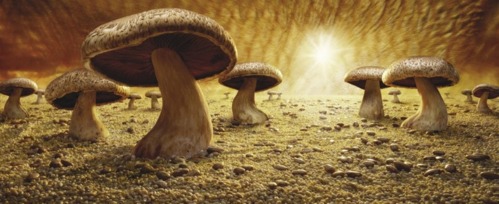
Mushroom savana
How does your art affect people`s attitude to food?
I hope it gives them a greater appreciation of the aesthetic qualities of what we eat as trends in cuisine and gastronomy are also reflecting a greater interest in the presentation of recipes and dishes in order to engage us in a more sensual enjoyment of food other than just taste.
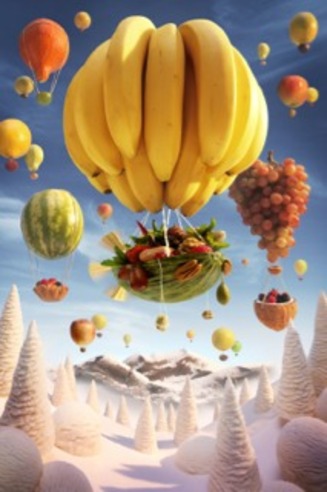
Banana baloon
My biggest concern and greatest hope is that my work might be used to alter the perception of food in children so that they are educated in the knowledge of a wider food culture and inspired to try new things and form a desire to eat more healthily. A better understanding of diet and nutrition can alter our eating habits and in turn this can lead to an improvement in the way our societies operate in terms of health, education and social harmony.
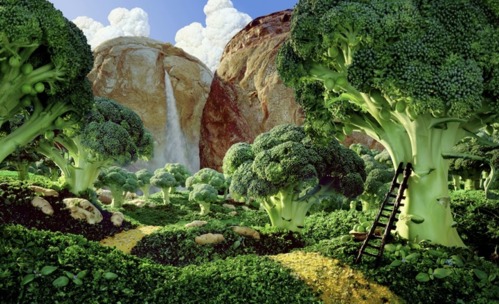
Broccoli forest
It’s a simple fact that what we eat affects the way we feel and the way we feel affects the way we act. So affecting people’s attitudes to food through my art is could play a small part in the process of changing the way we live, and the use of something as simple as food to create something as beautiful and wondrous as a landscape is a testament to it’s life changing properties.
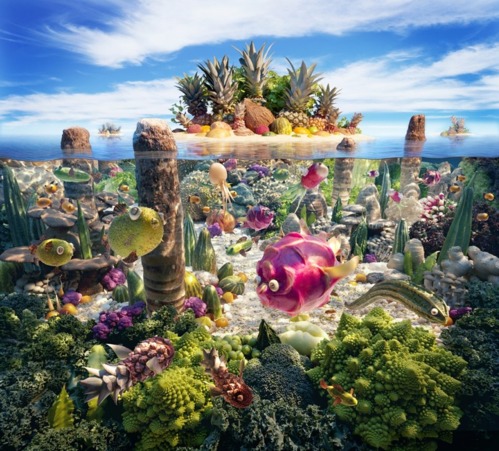
Coralscape
It is interesting that most of your photos include fruit and vegetables, mushrooms, fish, rather than fast food and desserts. Do you emphasize on healthy food intentionally?
I tend to use a lot of natural uncooked ingredients as their organic forms are easier to replicate more natural scenes and landscapes and this does carry with it a much simpler and healthier message, however I have recently completed a series of images for a children’s book in which I use ice cream, chocolates and candy to create fairytale scenes and landscapes. This however does not condone unhealthy eating, as there is nothing wrong with enjoying sweet things or even the occasional indulgence in fast food, my personal food philosophy is more about balance and not over indulging. I love eating good fresh food made with good quality ingredients and more often than not this means that my diet is an extremely healthy one.
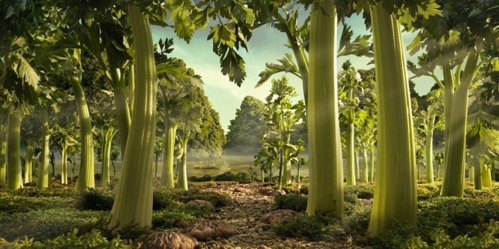
Celery forest
How to you manage to enliven inanimate objects through your art?
I bring objects to life in a number of ways, such as exploiting their visual resemblance to something that is more alive or animated in the larger world. I create moods and atmospheres through the use of lighting and composition that create a sense of place forth viewer to engage with. I look for interesting, unusual angles and view points to look at something with to bring either a dramatic or humorous aspect to the shot, or merely find an emotional connection in a subject which my images are then able to translate and communicate to the viewer.
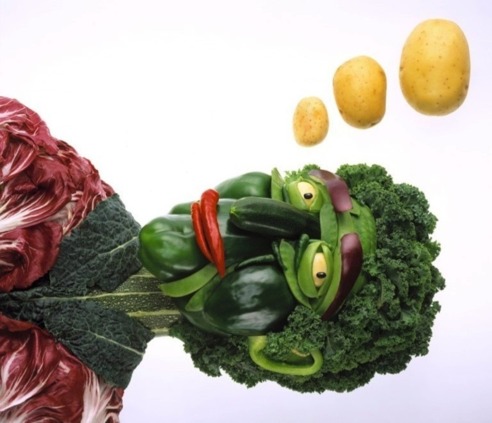
Vege head
What can we see in your book “Food Landscapes”?
Carl Warner’s Food Landscapes shows about twenty five ‘Foodscapes’ from the very first (Mushroom Savanna) to some of the more recent works. I talk about how each image was created from inspiration to the build and shoot stage. There are initial sketches, ingredients lists for each picture as well as behind the scenes snaps of myself and my team at work creating the sets.
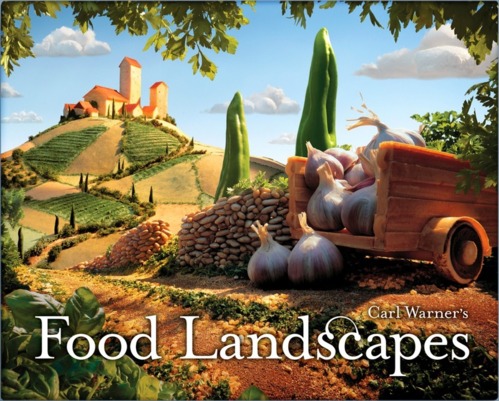
“Food Landscapes” cover
What advertising companies have you worked with?
I have worked with most if the top advertising agencies in many different countries, and i have been taking my work into the realm of the moving image by directing TV commercials and creating short films which is a very interesting although challenging development of my work.
What do you like most in your work?
I love all aspects of it, from the first thought of an idea through the production process of buying ingredients, building the sets, lighting, shooting, retouching and then finally hanging a print on the wall of a gallery. But all those are very selfish enjoyments and the thing that gives me the most pleasure is seeing the smiles it brings to the faces of people who having been fooled into thinking they are looking at a real scene and then suddenly realise that they are actually looking at food. I don’t think I will ever tire of seeing that reaction to my work.
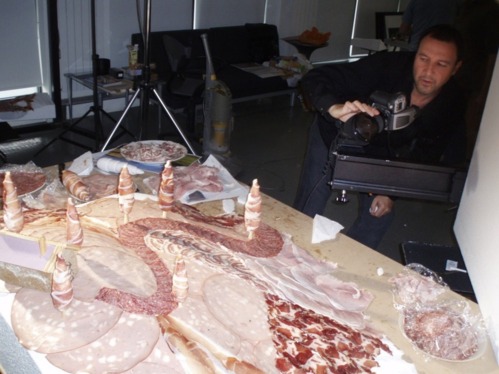
Carl at work
Describe your photos in three words!
A pleasant deception.
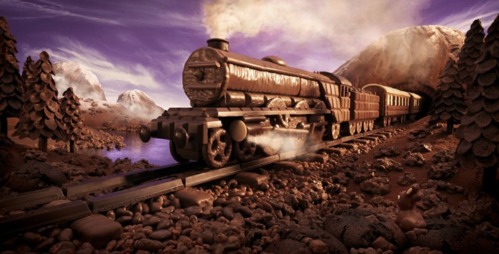
Chocolate express
Biography:
Born in Liverpool, England in 1963, he moved to Kent at the age of seven where as an only child he spent hours in his room drawing and creating worlds from his imagination having been inspired by artists such as Salvador Dali, Patrick Woodroofe and record sleeve artists such as Roger Dean and the work of Hipgnosis. Carl began his career by going to art college with a view to becoming an illustrator as he had a talent for drawing yet quickly discovered that his ideas and creative eye was better suited to photography as a faster and more exciting medium in which to work. After a year’s foundation course at Maidstone Art College he moved to the London College of Printing in 1982 to do a three year degree course in photography, film and television. In 1985 he left to assist various photographers in the world of advertising for a year, after which he became one himself.
Although a very keen landscape photographer he initially established himself as a successful still life photographer, and then began to branch out into other areas of photography in the advertising world, shooting people and landscapes for a wide variety of products and brands. Over the past ten years he has been developing a body of work making landscapes out of food, and has been commissioned by many advertising agencies throughout the world to produce these for clients in the food industry.
In January of 2008 this work was featured in the Sunday Times, after which the flood gates opened to a host of media attention from magazines and newspapers all over the world to television reports, documentaries and interviews including an appearance on the Richard and Judy Show. The publishing of the images on many TV and newspaper websites led to the creation of many pdf format viral emails which are still to this day being passed around the globe.
These virals have led to a recognition of his work throughout the world which has resulted in a book deal with a major U.S. publisher, the licensing of images for many merchandising opportunities as well as advertising campaigns and commissions from some of the biggest brand names in the food world. Some of these campaigns have led Carl to expand his work into the moving image where he has begun to direct television and internet commercials.
The ‘Foodscapes’ are created in Carl’s London studio where they are built on top of a large purpose built triangular table top. The scenes are photographed in layers from foreground to background and sky as the process is very time consuming and so the food quickly wilts under the lights. Each element is then put together in post production to achieve the final image.

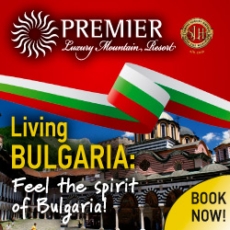

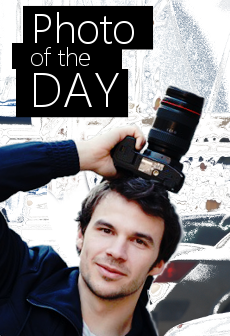

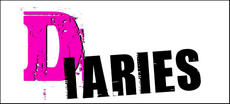





No comments so far ↓
Nobody has commented yet. Be the first!
Comment